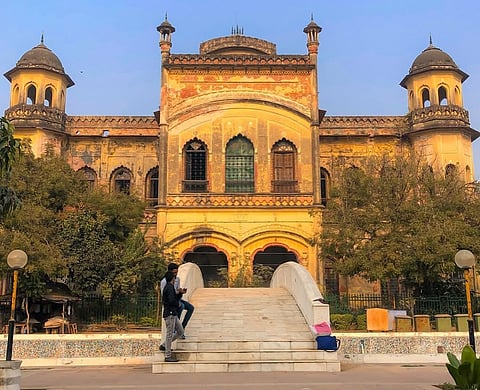
- Destinations
- Experiences
- Stay
- What's new
- Celebrating People
- Responsible Tourism
- CampaignsCampaigns
- Subscribe
- Buy Now

Lucknow, a city steeped in history, is adorned with numerous mansions and palaces that reflect its illustrious past, such as the iconic 110 year old Butler House. These architectural marvels, scattered throughout the urban landscape, showcase stunning designs and intricate craftsmanship that tell stories of a bygone era. One of these, the historic Butler Palace, is poised to become a vibrant book café and cultural hub through a state government initiative aimed at revitalising cultural heritage.
Named after Sir Spencer Harcourt Butler, a distinguished British civil servant who served as the Deputy Commissioner of Awadh, the palace is a vital part of Awadhi heritage, embodying the grandeur and complexities of the region's history. The foundation stone of Butler Palace was ceremoniously laid in 1915 by the Raja of Mahmudabad, setting the stage for its construction as a lavish residence for the royal family. While the royal family resided there for only a few years, the building transitioned into a philosophical institute, later serving as a refuge for those displaced during tumultuous times.
Eventually, government intervention led to its conversion into housing for refugees. Despite these changes, which have altered its original opulence, the palace retains a four-faceted structure and impressive architectural nuances that speak volumes of its former glory.
The Lucknow Development Authority (LDA) is launching a renovation project using a public-private partnership to restore the historic structures in the city. The initiative focuses on structural repairs, façade conservation, and enhancing public engagement in heritage conservation. A key aspect of this project is transforming the historic Butler Palace into a vibrant art gallery. This gallery is envisioned as a cultural hub for exhibitions, workshops, and community events celebrating local art and heritage. The palace's architectural integrity will be preserved.
The process will start with site clearance and essential structural repairs and façade conservation. Upgrades to basic wiring will also support modern needs, all under the supervision of a dedicated team of experts. The LDA aims to restore the Butler Palace and foster a deeper connection between the public and their heritage, inspiring future generations to value and protect historical landmarks.
The renovated palace will stand as a remarkable example of adaptive reuse architecture, a practice that emphasises the importance of repurposing existing buildings for new functions. This approach not only promotes sustainability by reducing waste and minimising material consumption but also preserves the historical significance of the structures, fostering a sense of urban renewal and cultural continuity.
As the Butler Palace embarks on this new chapter as a book café and cultural space, it symbolises not just the preservation of heritage but also the community's commitment to reimagining and sustaining its historical identity amid modern development.
